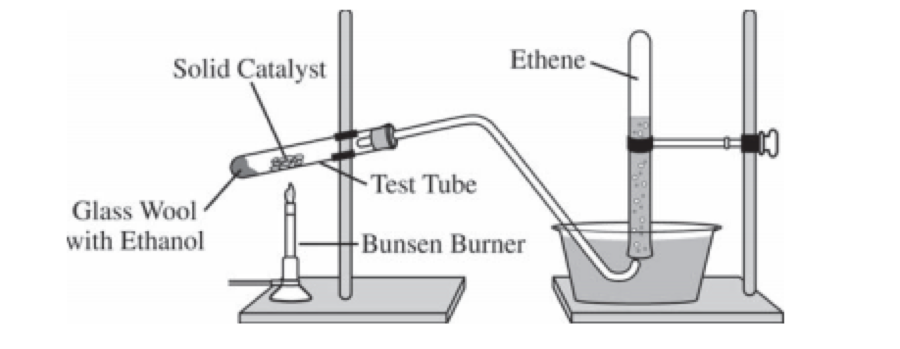

The resulting intermediate, acetaldehyde, is a known carcinogen, and poses significantly greater toxicity in humans than ethanol itself. When present in significant concentrations, this metabolism of ethanol is additionally aided by the cytochrome P450 enzyme CYP2E1 in humans, while trace amounts are also metabolized by catalase. These enzymes catalyze the oxidation of ethanol into acetaldehyde (ethanal): CH 3CH 2OH + NAD + → CH 3CHO + NADH + H + In mammals, ethanol is primarily metabolized in the liver and stomach by alcohol dehydrogenase (ADH) enzymes. Ethanol is present mainly as an antimicrobial preservative in over 700 liquid preparations of medicine including acetaminophen, iron supplements, ranitidine, furosemide, mannitol, phenobarbital, trimethoprim/sulfamethoxazole and over-the-counter cough medicine. Liquid preparations of pain medications, cough and cold medicines, and mouth washes, for example, may contain up to 25% ethanol and may need to be avoided in individuals with adverse reactions to ethanol such as alcohol-induced respiratory reactions. Medicinal solvent Įthanol, often in high concentrations, is used to dissolve many water-insoluble medications and related compounds. Though it has more side effects, ethanol is less expensive and more readily available than fomepizole, which is also used as an antidote for methanol and ethylene glycol poisoning. Ethanol serves this process by acting as a competitive inhibitor against methanol and ethylene glycol for alcohol dehydrogenase. Antidote Įthanol may be administered as an antidote to ethylene glycol poisoning and methanol poisoning. Ethanol can also be used as a disinfectant and antiseptic because it causes cell dehydration by disrupting the osmotic balance across cell membrane, so water leaves the cell leading to cell death. Absolute ethanol may inactivate microbes without destroying them because the alcohol is unable to fully permeate the microbe's membrane.

A solution of 70% ethanol is more effective than pure ethanol because ethanol relies on water molecules for optimal antimicrobial activity. However, it is ineffective against bacterial spores, but that can be alleviated by using hydrogen peroxide. Ethanol kills microorganisms by dissolving their membrane lipid bilayer and denaturing their proteins, and is effective against most bacteria, fungi and viruses. Main article: Alcohol (medicine) Antiseptic Įthanol is used in medical wipes and most commonly in antibacterial hand sanitizer gels as an antiseptic for its bactericidal and anti-fungal effects. Before the late 18th century the term "alcohol" generally referred to any sublimated substance. The use of "alcohol" for ethanol (in full, "alcohol of wine") is modern and was first recorded in 1753. It is a medieval loan from Arabic al-kuḥl, a powdered ore of antimony used since antiquity as a cosmetic, and retained that meaning in Middle Latin.

The term "alcohol" now refers to a wider class of substances in chemistry nomenclature, but in common parlance it remains the name of ethanol. The name ethanol was coined as a result of a resolution that was adopted at the International Conference on Chemical Nomenclature that was held in April 1892 in Geneva, Switzerland. According to the Oxford English Dictionary, Ethyl is a contraction of the Ancient Greek αἰθήρ ( aithḗr, "upper air") and the Greek word ὕλη ( hýlē, "substance"). He coined the word from the German name Aether of the compound Cĥ (commonly called "ether" in English, more specifically called " diethyl ether"). The "eth-" prefix and the qualifier "ethyl" in "ethyl alcohol" originally come from the name "ethyl" assigned in 1834 to the group Cĥ− by Justus Liebig. Ethanol is the systematic name defined by the International Union of Pure and Applied Chemistry (IUPAC) for a compound consisting of an alkyl group with two carbon atoms (prefix "eth-"), having a single bond between them (infix "-an-") and an attached functional group −OH group (suffix "-ol").


 0 kommentar(er)
0 kommentar(er)
